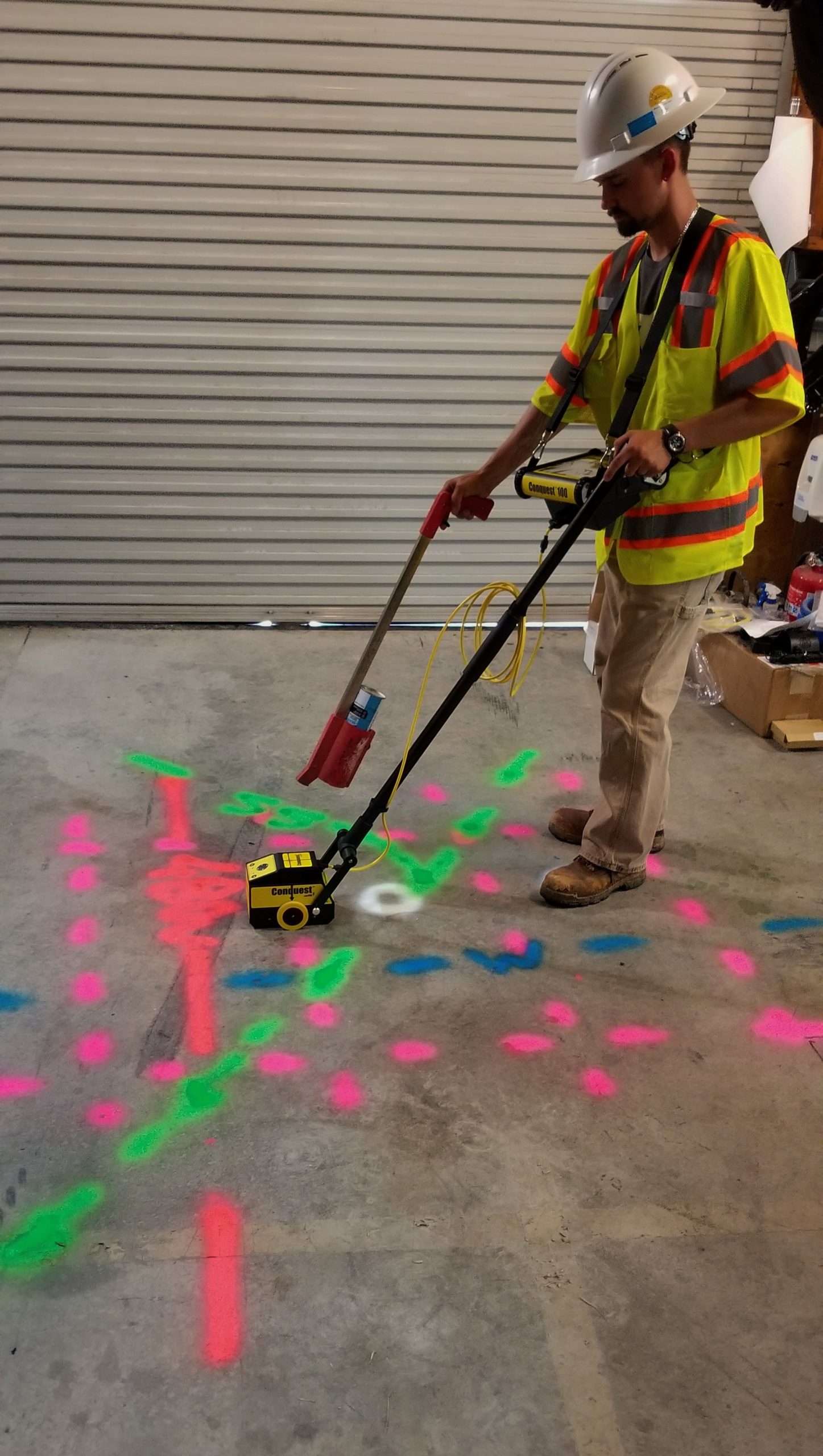Nationwide RainierGPR Service Areas for Advanced Concrete Scanning
Wiki Article
Enhancing Task Preparation and Execution With Advanced Concrete Scanning Strategies
In the world of project planning and foresight, precision and implementation are vital elements that can make the distinction in between success and setbacks. Advanced concrete scanning strategies have actually emerged as a sophisticated tool set to raise the requirements of job administration within the building and construction sector.Benefits of Advanced Concrete Scanning Techniques

Improved Accuracy in Project Analyses
Enhancing task analyses through advanced concrete scanning techniques considerably boosts the accuracy and dependability of construction analyses. By using advanced scanning modern technologies such as ground-penetrating radar (GPR) and 3D imaging, task groups can now get in-depth insights right into the condition of concrete structures, recognizing prospective flaws or weak points that may not be noticeable to the nude eye. This boosted level of precision in project analyses allows building and construction specialists to make more informed decisions pertaining to repair service and maintenance methods, resulting in boosted general task results.In addition, the increased precision in project evaluations attained through sophisticated concrete scanning techniques aids in reducing the threat of unforeseen problems throughout the building and construction stage. By proactively finding hidden anomalies within concrete frameworks, such as rebar corrosion or spaces, job groups can address these issues beforehand, avoiding costly hold-ups and revamp later on in the task lifecycle. Ultimately, the improved accuracy in job assessments assisted in by advanced concrete scanning techniques adds to better efficiency, cost-effectiveness, and high quality in building and construction tasks.
Very Early Recognition of Architectural Obstacles
Very early discovery of architectural obstacles plays an essential role in ensuring the stability and security of concrete frameworks throughout the building process. Identifying potential concerns at a beginning permits prompt intervention, avoiding expensive rework, timetable hold-ups, and security dangers. Advanced concrete scanning methods, such as ground-penetrating radar (GPR) and 3D imaging, enable task teams to uncover hidden defects, gaps, reinforcement layout discrepancies, and other abnormalities that can jeopardize the structure's security.By applying these strategies during the preparation and implementation phases, building and construction experts can proactively attend to structural obstacles before they rise into significant troubles. For example, detecting poor concrete cover over reinforcement bars beforehand can stop corrosion and architectural weakening in the lengthy run - RainierGPR Service Areas. Moreover, recognizing variations in concrete thickness or density can assist optimize product usage and make certain uniform toughness properties throughout the structure
Inevitably, early identification of architectural challenges through innovative concrete scanning not only improves the total quality and sturdiness of the construction however additionally adds to a more secure built atmosphere for customers and occupants.
Improved Security Actions in Construction
The execution of durable safety procedures is vital in the building and look at here now construction sector to reduce dangers and guard the health of employees and stakeholders. Construction websites are naturally unsafe environments, with potential risks ranging from falls and equipment malfunctions to structural failures. To improve precaution, construction companies my response are increasingly adopting technological advancements such as wearable devices that monitor workers' crucial indications and find possible health and wellness concerns in real-time. Moreover, the usage of drones for site surveillance enables normal safety and security examinations without placing employees in injury's method. Security training programs have also evolved to include digital truth simulations that offer hands-on experience in handling emergency situation circumstances. Additionally, the integration of expert system in safety administration systems enables aggressive recognition of potential threats, allowing for prompt interventions. By focusing on security through the unification of sophisticated technologies and detailed training programs, building jobs can significantly decrease crashes and create a safe working atmosphere for all entailed - RainierGPR Service Areas.
Streamlining Task Monitoring Processes
To maximize operational efficiency and guarantee project success in the construction industry, a focus on improving task monitoring procedures is crucial. By applying reliable task administration processes, construction jobs can lessen delays, reduce prices, and enhance general productivity. One key facet of simplifying job administration is the usage of sophisticated technologies such as Structure Info Modeling (BIM) software, which makes it possible for real-time partnership, clash detection, and accurate task scheduling. Additionally, the fostering of cloud-based project monitoring platforms allows for seamless communication amongst staff member, instantaneous accessibility to project information, and the ability to track progression in real-time.
Final Thought
In final thought, the use of sophisticated concrete scanning techniques provides numerous advantages for task preparation and execution. These techniques provide enhanced accuracy in task assessments, very early recognition of structural challenges, improved safety measures in building, and structured project monitoring processes. Incorporating these approaches right into project operations can eventually lead to extra efficient and effective results in construction tasks.Eventually, the improved precision in job assessments facilitated by sophisticated concrete scanning techniques contributes to greater effectiveness, cost-effectiveness, and high quality in building and construction tasks. RainierGPR Service Areas.
To optimize functional performance and make sure project success in the building sector, a focus on simplifying project monitoring procedures is necessary. By carrying out efficient job monitoring processes, building tasks can minimize delays, lower costs, and enhance total performance. By streamlining job monitoring procedures through modern technology integration, clear communication, and data-driven techniques, building and construction tasks can achieve greater performance, cost-effectiveness, and successful results.
These methods give improved accuracy in project evaluations, very early recognition of architectural challenges, enhanced security procedures in building and construction, and streamlined job monitoring procedures.
Report this wiki page